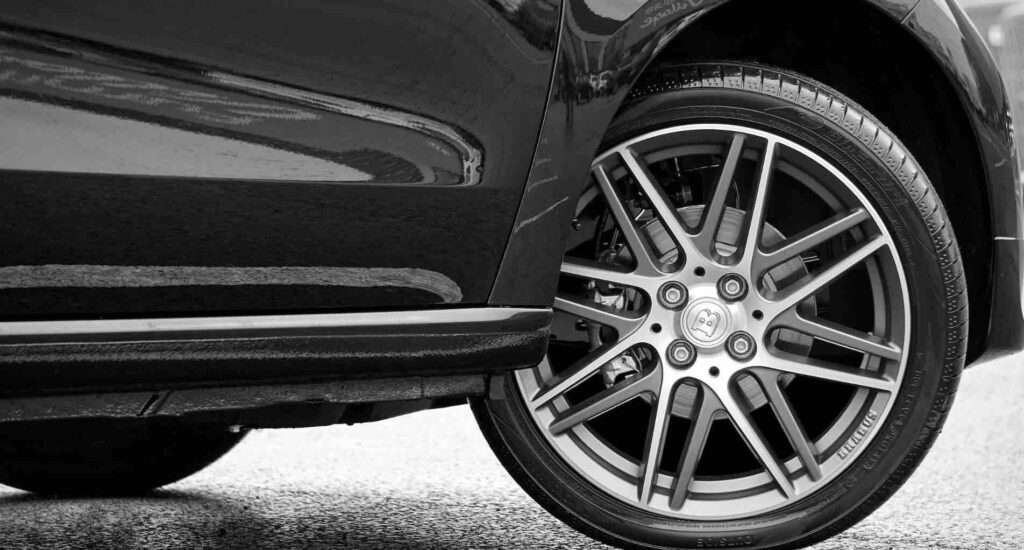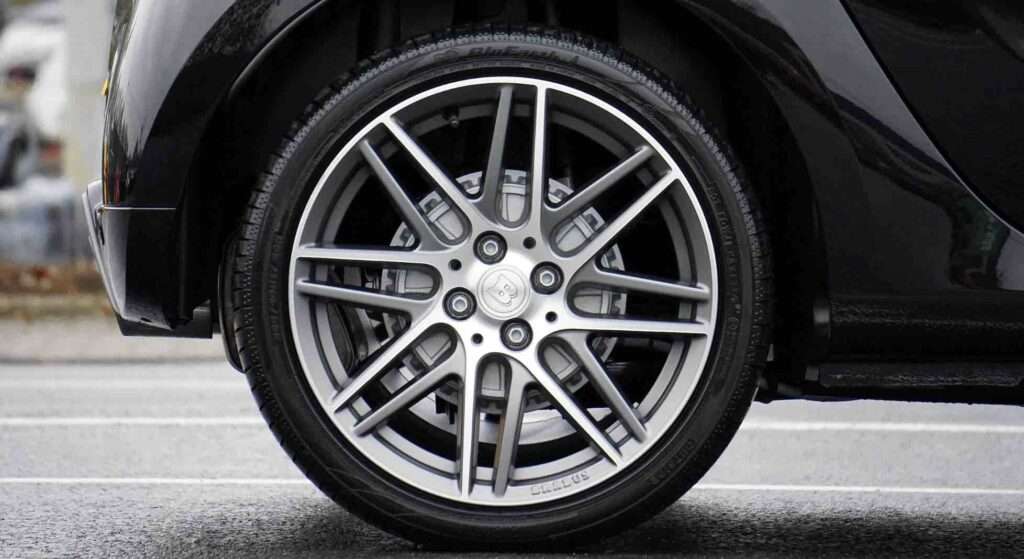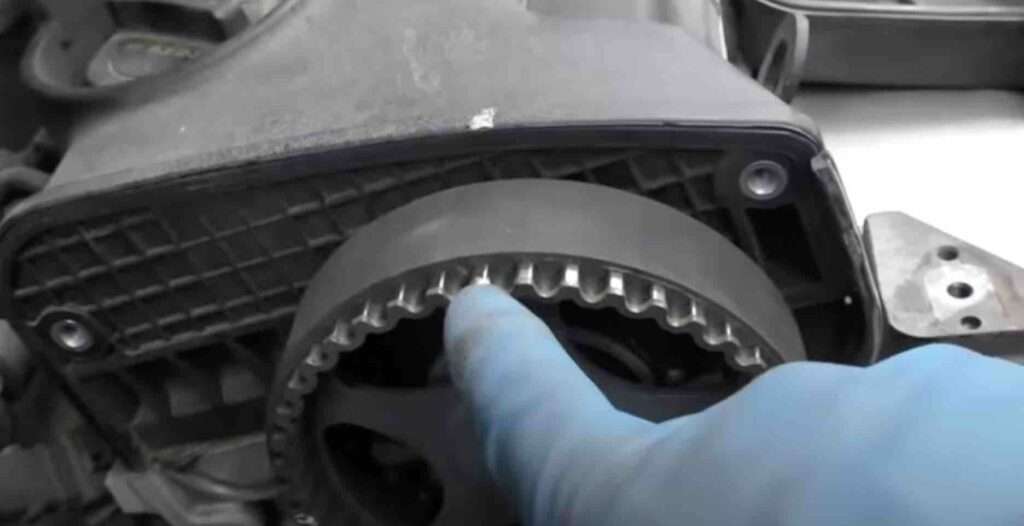Last updated on December 22nd, 2022 at 05:05 pm
Is replacing two tires instead of four good? Find out in this post. Changing only one or two tires on a car can create extra wear and tear on the powertrain and fool the traction control system into believing you are losing traction regularly.

A brand-new tire has a greater diameter than a tread-wearing tire of the same brand, kind, and size. This indicates a measurable variation in tire circumference that may impair the performance of your car. Imagine two folks out on a stroll to understand why this is important.
They are sporting fitness trackers that track their steps and distance traveled. However, one is taller and has longer legs than the other. By the workout’s conclusion, they may have covered the same distance, but the taller walker will have taken fewer steps.
Keynote
Mismatched tires are in the same boat. In a single revolution, a taller tire with more tread depth travels further than a shorter tire with less tread depth. To keep up with the tire with more tread depth, the tire with less tread depth will spin faster and have more revolutions.
In conclusion, mixing tire brands or models may result in handling instability. When only two tires need to be replaced, we recommend putting the new ones on the back and the old ones on the front. On slick roads, this could help you avoid a spinout or oversteer. Both of these suggestions are valid for vehicles with rear-wheel drive.
Can you replace two tires on an all-wheel-drive vehicle?

It’s almost impossible to replace a tire on an AWD or FT-4WD car. You should change your tires in pairs if you operate a part-time 4WD car. Replacing less than four tires on a D or FT-4WD vehicle can be detrimental to the drivetrain.
This is why so many AWD/FT-4WD vehicles manufacturers recommend replacing all four tires simultaneously. Tires for AWD and FT-4WD cars must always be the same size, model, and tread design when replaced.
When changing less than four tires, the residual tread depths must be tested to check if the AWD/FT-4WD system is still functional. Changing one or three tires is not a possibility but if you have a full-size spare tire that matches the new tires’ size, brand, model, and tread depth. You’ll have to modify 2 or 4 else. If specific requirements are satisfied, several vehicles allow for replacing two tires.
Is replacing two tires instead of four good?
Whether it’s front wheel, rear wheel, or all-wheel drive, all tire manufacturers specify that if only two tires are replaced, they must go in the back. It’s all about cornering safety. Regarding grip, new tires offer a huge advantage over older tires, especially in rainy conditions.
When any new tires are on the front, they will stick more than the rears, and if traction is poor, the rear end may come away, spinning the car out of control. Oversteer is a term used to describe a condition in which a vehicle is.
The odds of the new tires coming away in the back are substantially lower than in the front. The automobile will understeer or plow forward if the front tires lose grip before the rear tires. It’s much easier to get out of this situation than to get out of a spin.
Steps to take when replacing two tires instead of four
While replacing tires in pairs, the fresh tires should always go on the back axle, and the partially worn tires should go on the front axle. Since tires with deeper treads are more likely to withstand hydroplaning, driving with fresh tires on the rear axle can assist the vehicle in maintaining control on wet roads.
- Place the wheel chocks in the appropriate positions.
- Remove the lug nuts from the wheels.
- The automobile is being jacked.
- Change the tyre that has become flat.
- The replacement wheel should be installed.
- Tighten the nuts as you lower the automobile.
- Drop the vehicle to its lowest point.
- Make sure the spare tyre is in good condition.
- Bring your tire to be repaired if it has a puncture.
The car is often considered simpler to control when the front tires have less tread than the rear axle tires. Sliding is most usually caused by understeer, which the driver may manage by lowering the throttle. If you put worn tires on the back axle and slide, it’s most likely due to oversteering.

Keynote
The suspension, gear ratios, powertrain, and tire treadwear can all suffer when a single tire is replaced on a vehicle. Perhaps if one tire has to be replaced, the tires should be rotated such that the new tire is coupled with the tire.
This is better done with the most tread depth out of the other three than positioned on the back axle. Oversteering is more difficult to recover from, and lowering the throttle may exacerbate the oversteering’s negative consequences.
Can you replace just two tires on a front-wheel-drive car?
If you need to replace all four tires on your all-wheel drive vehicle, we recommend doing it at the same time. Although it may be tempting to replace only two at a time, combining new and worn tires might result in a size discrepancy from front to rear, potentially causing vehicle damage.
Because a new tire will have a greater overall diameter than the previous tires, some all-wheel-drive vehicle manufacturers advocate replacing all four tires, not just one or two. Those that have lost just a few 32nds of a tread depth may spin quicker than the fresh ones, causing an AWD system to engage on dry pavement and perhaps damaging the system.
Can you replace only two tires on an all-wheel-drive vehicle?
Whenever two of your tires need to be changed, it’s critical to read your vehicle’s owner’s handbook to determine if changing all four AWD tires at once is recommended.
Look at the sections for tires and transmissions. Alternatively, phone your car dealer’s service department and inquire about your make and model. Ignoring this advice might lead to expensive damage to some of your car’s most vital driving components, such as the transmission.
Every trustworthy tire dealer will do as the automobile manufacturer instructs. Almost all manufacturers agree that all four should be replaced. If you suspect two of your tires still have some tread life left, have a tire specialist utilize a tread depth tester to evaluate the tread correctly.
Where should the two new tires be installed when replacing two tires instead of four?
Always put new tires in the back of the vehicle. The rear tires provide the vehicle’s stability; if worn out, the vehicle’s stability is compromised.
According to Tire Review, while fresh front tires disseminate water and preserve grip, old back tires hydroplane and may cause the car to spin out. Vehicles with rear-, front-, or all-wheel drive are similarly affected.
We constantly advise drivers to put their most recent tires on the back of their cars for maximum safety. The above will provide the rear axle more grip, preventing oversteer and loss of vehicle stability on slick roads.
In the tyre business, several experiments have proven that controlling the front wheels of a vehicle is easier than controlling the back wheels.
Read also: Should You Leave Spare Tire 60 Psi On Or Off Car?

Uchenna is a Radiographer and Auto parts mechanic who recently got his automotive diploma as an auto repair technician, and since then, has worked on fixing various car problems.
Working as just a radiographer, Uchenna didn’t just get all the fulfillment he desired, because he truly loved doing things tilted toward cars. As a kid, he would take apart his toy cars to see how they worked and would spend hours tinkering with his bike.
So, in 2017 he made the tough decision to become an auto mechanic. He threw himself into his studies and now loves every aspect of what he does.
He gets to work with his hands, solving problems and bringing cars back to life, and sharing his knowledge and easy quick-fix guide online are all part of what makes him feel fulfilled.




